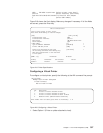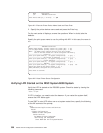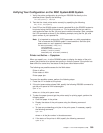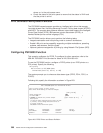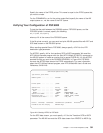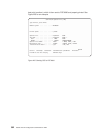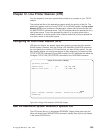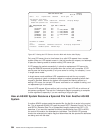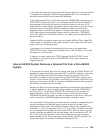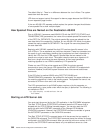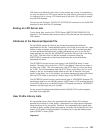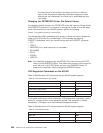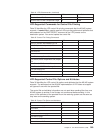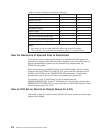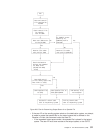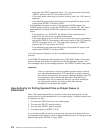In this case, the control file printing command flags are ignored, and the spooled file
is created on the destination AS/400 using the spooled APIs. For information on
spooled file and print APIs, see
System API Reference
.
If the original spooled file is in SCS format and the TRANSFORM parameter on the
SNDTCPSPLF command is set to *YES, the system transforms the file to ASCII. It
accomplishes this by using the host print transform function on the client (LPR)
system before it sends the file. The system uses the manufacturer, type, and model
information given on the MFRTYPMDL parameter to determine which printer
attributes to use in the ASCII data stream. The destination system receives the
ASCII data stream without change. Because the file is received in *USERASCII
format, the destination AS/400 cannot read it. You need to print the spooled file to
see the contents.
Spooled file APIs are used to receive files from remote AS/400s. When these APIs
create copies of a spooled file, they require access to the original printer file, which
might not exist on the target system.
If the access to the printer file is restricted from the user or the default user
QTMPLPD, then errors might occur. Because this is an API limitation, it is currently
considered an LPD restriction.
In addition, this also makes
Send TCP/IP Spooled File
(SNDTCPSPLF) work
consistently in the same manner as SENDNETSPLF, which also requires the
original printer file.
How an AS/400 System Receives a Spooled File from a Non-AS/400
System
If the spooled file is being sent from any system other than an AS/400, AS/400 LPD
accepts the request using either the newer RCFF and RDFUL protocol, or the older
RDF (Receive Data File) and RCF (Receive Control File) protocol. Some LPR
clients do not support the new protocol, but the AS/400 LPD server accepts either
format. From the control file information, the AS/400 can establish that the file is not
being sent from another AS/400. In this case, the AS/400 assumes that no spooled
file attributes are being sent with the data.
Because the AS/400 requires that each spooled file have attributes associated with
it, default attributes are given to the file using a default printer file, QPTMPLPD, in
the library QTCP. The printer file QPTMPLPD in the library QTCP contains the
default installation values. There is another version of the printer file in library
QUSRSYS that should be used if you want to customize the printer file. Using the
version that exists in QUSRSYS preserves the default installation values.
For non-AS/400 LPR requesters, you obtain best print results by understanding that
minimal formatting of the data file occurs, other than what is provided by the
destination printing system. The AS/400 LPD server does provide support for the
print filters
v
,
l
, and
f
, as described in RFC 1179. If the
f
filter is received, line feeds
(LF) are replaced with carriage return/line feeds (CRLF). With the
f
filter, all printer
control characters are deleted from the data stream, with the exception of HT, CR,
FF, LF, BS, and ESC characters. Printer control characters are any characters
below hexadecimal 20. Since a parameter usually follows the ESC character, the
system also keeps the character immediately following the ESC.
Chapter 12. Line Printer Daemon (LPD) 365



